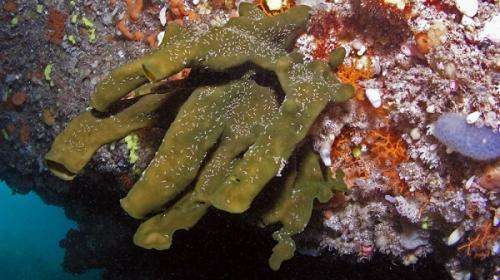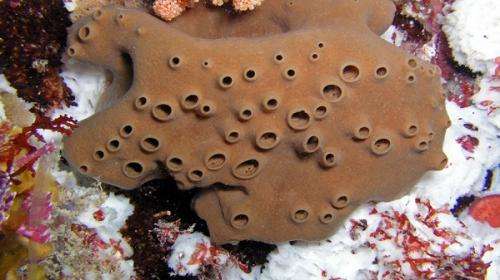Nyoongar names for newly classified sponges

Two new species of marine sponges, found only in the south-west of Western Australia, have been identified and named in recognition of the Aboriginal peoples who are the traditional owners of the region.
The sponges, identified by scientists at the Western Australian Museum and the WA Department of Fisheries were found to be unique to the south-west of Australia and different to any other sponge species in the world.
After consultation with the local Nyoongar people via the WA Museum Aboriginal Advisory Committee, the sponges were named Haliclona durdong—durdong meaning brown and Haliclona djeedara, the latter meaning green.
WA Museum's senior curator of marine invertebrates, Dr Jane Fromont, says both species belong to the Chalinidae group of sponges and have been described in a paper published in the international journal Zootaxa.
Department of Fisheries research scientist Dr Dave Abdo, undertook his PhD research on the ecology of both species, and it was during this work that classification of the sponges was necessary.
"They use silicon dioxide absorbed from seawater, to construct simple, needle-like components called spicules to build the skeletons that look like ladders," Dr Fromont says.
These spicules are key to identifying sponges as well as the physical morphology.
"We examined type descriptions and type material to compare the sponges and found that they were definitely new species."

"Not only did they have different sized spicules, they have different morphological characters, different chemistry and they reproduce differently," Dr Fromont says.
When a new species is described, a single 'holotype' specimen that has all the characteristics encapsulating the unique species is designated and lodged in a collecting institution, usually a museum for animals or a herbarium for plant specimens.
Both species are known to occur along the WA coast between Jurien Bay and Bremer Bay, with Haliclona durdong initially collected in the 1980s receiving immense interest by chemists due to a natural product known as salicylihalamide A.
Since sponges are ancient and sessile animals, some use the chemical salicylihamide A to defend themselves. The compound could also have other potential uses.
"Scientific research using this compound is ongoing, in particular investigations into its uses relating to health issues such as osteoporosis, renal disease, HIV infection, and tumour metastasis," Dr Abdo says.
The description of these two new sponges brings the species of Haliclona in Australia to 25.
More information: "New species of Haliclona (Demospongiae: Haplosclerida: Chalinidae) from Western Australia." Fromont J, Abdo DA. Zootaxa. 2014 Jul 9;3835(1):97-109. DOI: 10.11646/zootaxa.3835.1.5.
Journal information: Zootaxa
Provided by Science Network WA




















